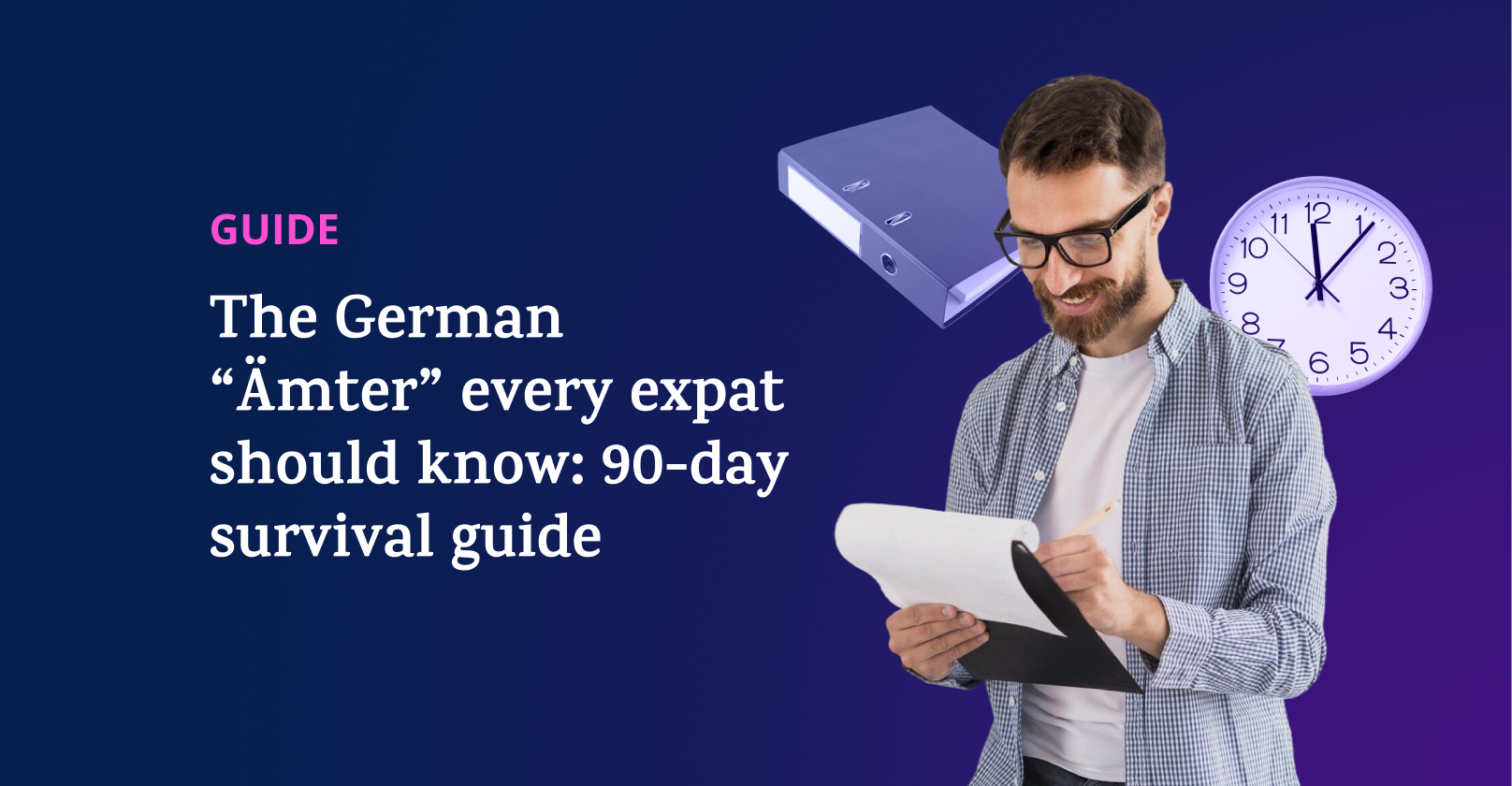German language accents: A guide to how German sounds across regions
Ever noticed how spoken German doesn’t sound the same in Berlin, Munich or Zurich?

That’s because there isn’t just one German accent. There are dozens, and each carries its own rhythm, melody and personality. From the soft and song-like Bavarian cadencesto the crisp tones of Hamburg and Hanover, German accents can reveal where someone’s from, how they think and even what mood they’re in.
But these aren’t just regional quirks; they’re living clues to history, geography and folk culture. Understanding accents in the German language can help you catch words faster and feel more connected to locals. In this guide, we’ll explore how accents form, why they matter and how you can train your ear to recognize and even adopt them!
- What is a German accent?
- Why accents matter in the German language
- The main German accents you’ll hear
- Why German accents matter for learners
- How to train your ear and improve your accent
- FAQs
What is a German accent?
In short, a German accent refers to a particular regional variation in the pronunciation of Standard German (Hochdeutsch or High German).
Accent vs. dialect: A simple breakdown
When we talk about a German accent, we’re talking about how a certain set of people generally pronounce German words. This includes features such as rhythm, melody and tone. A dialect, on the other hand, can be so unique in its vocabulary and grammar that it almost sounds (and essentially functions) like a separate language. Accents color speech, but dialects reshape it.
If you can understand someone’s words but notice a different sound, you’re likely picking up on an accent. If you can’t quite follow the words themselves, it’s possibly a dialect.
| Accent | Dialect | |
| Focus | Pronunciation, tone, rhythm | Vocabulary and grammar |
| Mutual understanding | High | Sometimes low |
| Example | Bavarian accent | Bairisch |
| Learning impact | Affects listening and pronunciation | Affects comprehension |
Why ‘Hochdeutsch’ is the reference point for accents
Hochdeutsch (Standard German) acts as the neutral anchor for all regional variations. It’s used in schools, media and official communication. Every German accent exists in relation to it. Whether you’re in Hamburg, Cologne or Vienna, Hochdeutsch is the shared baseline that keeps the German-speaking world connected.

Learn German with Lingoda
How it works

Why accents matter in the German language
Accents in the German language are linked to each region's identity. A few words are often enough for Germans to tell whether someone grew up in Munich, Hamburg or Saxony. These differences carry deep cultural pride; they’re a piece of where you’re from.
Socially, accents also shape perception. Hochdeutsch is associated with professionalism and education. A Bavarian accent sounds warm, friendly and traditional, while the Berlin accent has an edgy, direct feel, and the Swiss German accent is seen as polite and melodic. And, yes, there’s a bit of friendly teasing between regions. It’s part of the charm!
The main German accents you’ll hear
The standard accent (‘Hochdeutsch’): Clear and neutral
This is the accent most learners start with. Hochdeutsch is precise, evenly paced and region-free. It’s the version you’ll hear on the news or in classrooms. Consonants are crisp, vowels are steady and pronunciation remains consistent throughout.
The northern accents: The crisp sound of Hamburg and Hanover
Northern speakers are known for their clean diction and clear tone. This is the area most associated with “pure” Hochdeutsch. Words are pronounced sharply and without much melody, giving this northern accent a calm, professional edge.
The Berlin accent: Urban, playful and fast
Berliners speak with attitude. Expect dropped endings, quick rhythms and the famous “ick” for ich. The tone is informal, witty and direct. It’s definitely a reflection of the city’s no-nonsense charm.
The Bavarian accent: Warm and melodic
This accent sounds friendly and musical. Consonants soften, vowels open and sentences roll along with rhythm. It’s one of the most recognizable and beloved accents, often heard in southern TV shows and folk songs.
The Austrian accent: Polite and musical
Austrians speak with a gentle, singsong quality characterized by longer vowels. The tone feels elegant and slightly theatrical. It’s influenced by centuries of central European culture. This diverse web of cultural inputs is perhaps best summed up by a phrase I heard once: “A true Viennese has a Slovak mom and a Hungarian dad.”
The Swiss German accent: Strong rhythm and ‘ch’ sound
Swiss German accents (not to be confused with Swiss dialects) stand out for their strong back-of-the-throat “ch” sound and rhythmic flow. It’s a distinctive melody that sounds clear, confident and unmistakably Swiss.
Why German accents matter for learners
For learners, accents open a window into German society. They show that language breathes and shifts with the people who speak it. uUnderstanding these various accents can help you listen better, connect faster and sound more natural.
Recognizing accents improves listening skills
Learning to recognize different German language accents trains your ear (and your patience). When you can tell a Berlin accent from a Bavarian one, understanding native speakers in movies, podcasts or daily conversations becomes much easier. It’s also practical for travel; the way people pronounce ich and nicht sounds different in Hamburg than it does in Zurich, though the meaning stays the same. Accents help you pick up regional cues, humor and folklore.
Mimicking accents builds pronunciation confidence
Imitating accents isn’t about sounding like someone else. Rather, it’s about mastering rhythm, stress and clarity, and there are a few ways to go about it.
How to train your ear and improve your accent
Watch and listen
Expose yourself to different accents by watching regional newscasts (like BR in Bavaria or NDR in the north) and local YouTubers. Notice how pace, pitch and pronunciation shift from city to city. Listening regularly helps your brain map sounds automatically — no memorization required.
Use speech shadowing and phonetic tools
Speech shadowing means repeating what you hear in real time. Pick short clips, and try to mimic the speaker’s rhythm and intonation. For precision, you can use phonetic tools or apps that show how vowels and consonants are formed. This helps train both your ear and your muscle memory.
Take online classes with Lingoda’s native teachers
Nothing replaces real interaction. With Lingoda’s native-speaking teachers, you can practice live conversation and get immediate feedback on pronunciation. What’s more, you’ll hear genuine regional accents and learn to distinguish them from German dialects.
Which German accent is easiest to understand?
Most learners find the northern German accent (especially around Hanover) the clearest. It’s closest to Hochdeutsch, with crisp pronunciation and minimal regional influence.
Is ‘Hochdeutsch’ really spoken everywhere?
Not exactly. Hochdeutsch is used in schools, media and formal settings, but daily speech often carries local color. Almost everywhere you go, you’ll hear regional sounds.
Celebrate the sound of diversity
Every German accent tells a story of geography, community and identity — from the clarity of Hanover to the melody of Bavaria, from Swiss rhythm to Berlin attitude. Each version has its own flavor and none is better or worse; they’re just different.
The more accents you hear, the stronger your listening and comprehension become. You’ll start catching details others miss, like tone, humor and personality. So, instead of chasing the “perfect” accent, celebrate variety. Learn to listen, imitate and adapt!
And if you want to experience German accents in conversation, Lingoda makes it possible with live online classes with native teachers from across the German-speaking world. Real voices, real variety and real progress.

Learn German with Lingoda
How it works

















